Molecule Information
General Information of the Molecule (ID: Mol00129)
| Name |
Nuclear receptor subfamily 1 group I3 (NR1I3)
,Homo sapiens
|
||||
|---|---|---|---|---|---|
| Synonyms |
Constitutive activator of retinoid response; Constitutive active response; Constitutive androstane receptor; CAR; Orphan nuclear receptor MB67; CAR
Click to Show/Hide
|
||||
| Molecule Type |
Protein
|
||||
| Gene Name |
NR1I3
|
||||
| Gene ID | |||||
| Location |
chr1:161229666-161238244[-]
|
||||
| Sequence |
MASREDELRNCVVCGDQATGYHFNALTCEGCKGFFRRTVSKSIGPTCPFAGSCEVSKTQR
RHCPACRLQKCLDAGMRKDMILSAEALALRRAKQAQRRAQQTPVQLSKEQEELIRTLLGA HTRHMGTMFEQFVQFRPPAHLFIHHQPLPTLAPVLPLVTHFADINTFMVLQVIKFTKDLP VFRSLPIEDQISLLKGAAVEICHIVLNTTFCLQTQNFLCGPLRYTIEDGARVSPTVGFQV EFLELLFHFHGTLRKLQLQEPEYVLLAAMALFSPDRPGVTQRDEIDQLQEEMALTLQSYI KGQQRRPRDRFLYAKLLGLLAELRSINEAYGYQIQHIQGLSAMMPLLQEICS Click to Show/Hide
|
||||
| Function |
Binds and transactivates the retinoic acid response elements that control expression of the retinoic acid receptor beta 2 and alcohol dehydrogenase 3 genes. Transactivates both the phenobarbital responsive element module of the human CYP2B6 gene and the CYP3A4 xenobiotic response element.
Click to Show/Hide
|
||||
| Uniprot ID | |||||
| Ensembl ID | |||||
| HGNC ID | |||||
| Click to Show/Hide the Complete Species Lineage | |||||
Type(s) of Resistant Mechanism of This Molecule
Drug Resistance Data Categorized by Drug
Approved Drug(s)
1 drug(s) in total
| Drug Sensitivity Data Categorized by Their Corresponding Mechanisms | ||||
|
|
||||
| Disease Class: Neuroblastoma | [1] | |||
| Sensitive Disease | Neuroblastoma [ICD-11: 2A00.11] | |||
| Sensitive Drug | Doxorubicin | |||
| Molecule Alteration | Expression | Down-regulation |
||
| Experimental Note | Revealed Based on the Cell Line Data | |||
| Cell Pathway Regulation | Cell apoptosis | Activation | hsa04210 | |
| Cell migration | Inhibition | hsa04670 | ||
| Cell proliferation | Inhibition | hsa05200 | ||
| In Vitro Model | UkF-NB3 cells | Bone marrow | Homo sapiens (Human) | CVCL_9904 |
| In Vivo Model | Immunodeficient NCr nude mouse xenograft model | Mus musculus | ||
| Experiment for Molecule Alteration |
Chromatin immunoprecipitation assay | |||
| Experiment for Drug Resistance |
Cell titer glo assay assay | |||
| Mechanism Description | Hypermethylation of the miR-137 promoter and negative regulation of miR-137 by CAR contribute in part to reduced miR-137 expression and increased CAR and MDR1 expression in doxorubicin-resistant neuroblastoma cells. | |||
| Disease Class: Colon cancer | [1] | |||
| Sensitive Disease | Colon cancer [ICD-11: 2B90.1] | |||
| Sensitive Drug | Doxorubicin | |||
| Molecule Alteration | Expression | Down-regulation |
||
| Experimental Note | Revealed Based on the Cell Line Data | |||
| Cell Pathway Regulation | Cell apoptosis | Activation | hsa04210 | |
| Cell migration | Inhibition | hsa04670 | ||
| Cell proliferation | Inhibition | hsa05200 | ||
| In Vitro Model | LS174 cells | Colon | Homo sapiens (Human) | CVCL_YJ85 |
| In Vivo Model | Immunodeficient NCr nude mouse xenograft model | Mus musculus | ||
| Experiment for Molecule Alteration |
Chromatin immunoprecipitation assay | |||
| Experiment for Drug Resistance |
Cell titer glo assay assay | |||
| Mechanism Description | Hypermethylation of the miR-137 promoter and negative regulation of miR-137 by CAR contribute in part to reduced miR-137 expression and increased CAR and MDR1 expression in doxorubicin-resistant neuroblastoma cells. | |||
| Disease Class: Hepatocellular carcinoma | [1] | |||
| Sensitive Disease | Hepatocellular carcinoma [ICD-11: 2C12.2] | |||
| Sensitive Drug | Doxorubicin | |||
| Molecule Alteration | Expression | Down-regulation |
||
| Experimental Note | Revealed Based on the Cell Line Data | |||
| Cell Pathway Regulation | Cell apoptosis | Activation | hsa04210 | |
| Cell migration | Inhibition | hsa04670 | ||
| Cell proliferation | Inhibition | hsa05200 | ||
| In Vitro Model | HepG2 cells | Liver | Homo sapiens (Human) | CVCL_0027 |
| In Vivo Model | Immunodeficient NCr nude mouse xenograft model | Mus musculus | ||
| Experiment for Molecule Alteration |
Chromatin immunoprecipitation assay | |||
| Experiment for Drug Resistance |
Cell titer glo assay assay | |||
| Mechanism Description | Hypermethylation of the miR-137 promoter and negative regulation of miR-137 by CAR contribute in part to reduced miR-137 expression and increased CAR and MDR1 expression in doxorubicin-resistant neuroblastoma cells. | |||
Disease- and Tissue-specific Abundances of This Molecule
ICD Disease Classification 02

| Differential expression of molecule in resistant diseases | ||
| The Studied Tissue | Nervous tissue | |
| The Specified Disease | Brain cancer | |
| The Expression Level of Disease Section Compare with the Healthy Individual Tissue | p-value: 2.22E-07; Fold-change: -8.03E-02; Z-score: -3.74E-01 | |
|
Molecule expression in the diseased tissue of patients
Molecule expression in the normal tissue of healthy individuals
|
||
| Disease-specific Molecule Abundances |
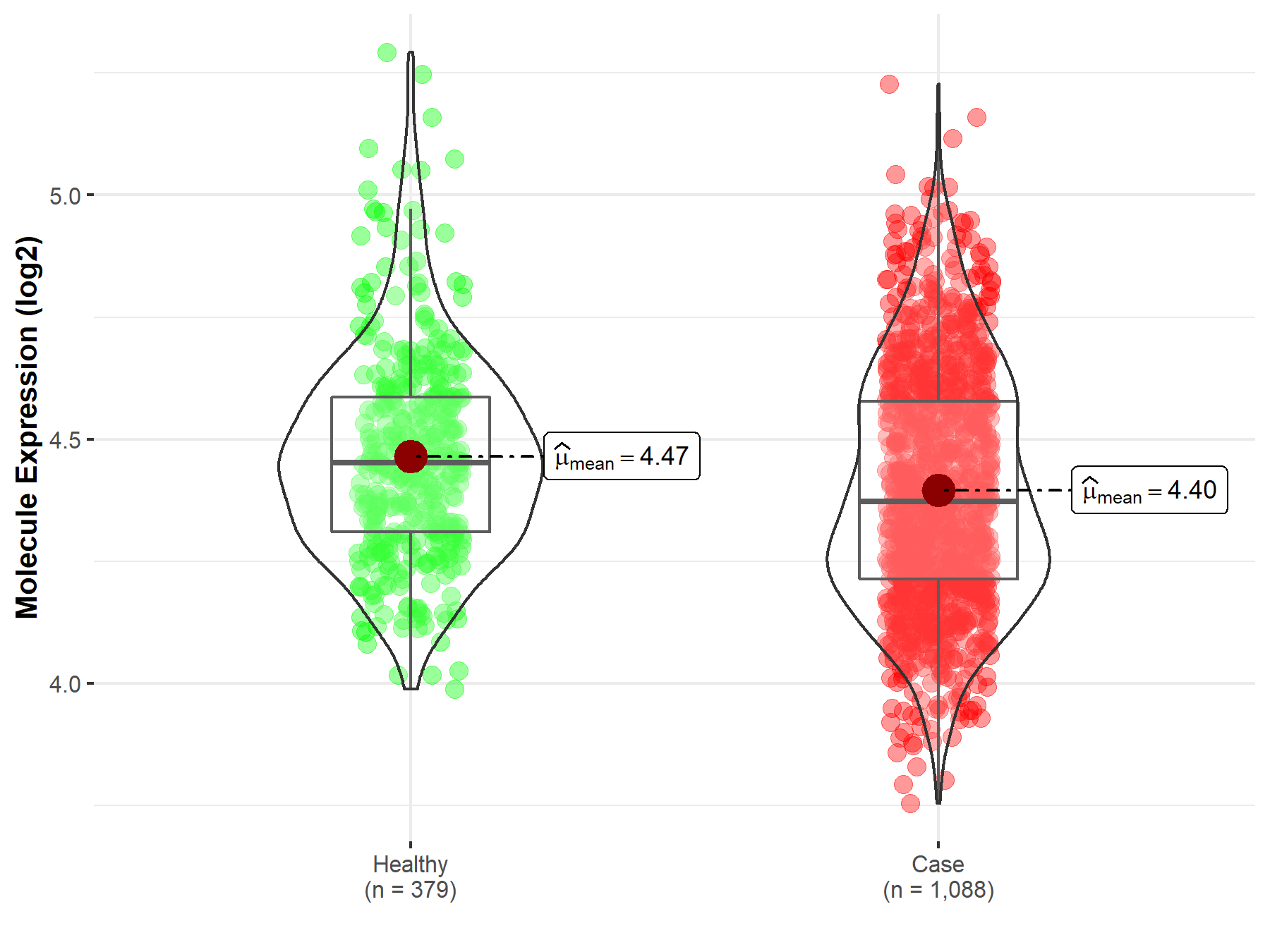
|
Click to View the Clearer Original Diagram |
| The Studied Tissue | Brainstem tissue | |
| The Specified Disease | Glioma | |
| The Expression Level of Disease Section Compare with the Healthy Individual Tissue | p-value: 6.50E-01; Fold-change: 3.19E-02; Z-score: 2.90E-01 | |
|
Molecule expression in the diseased tissue of patients
Molecule expression in the normal tissue of healthy individuals
|
||
| Disease-specific Molecule Abundances |
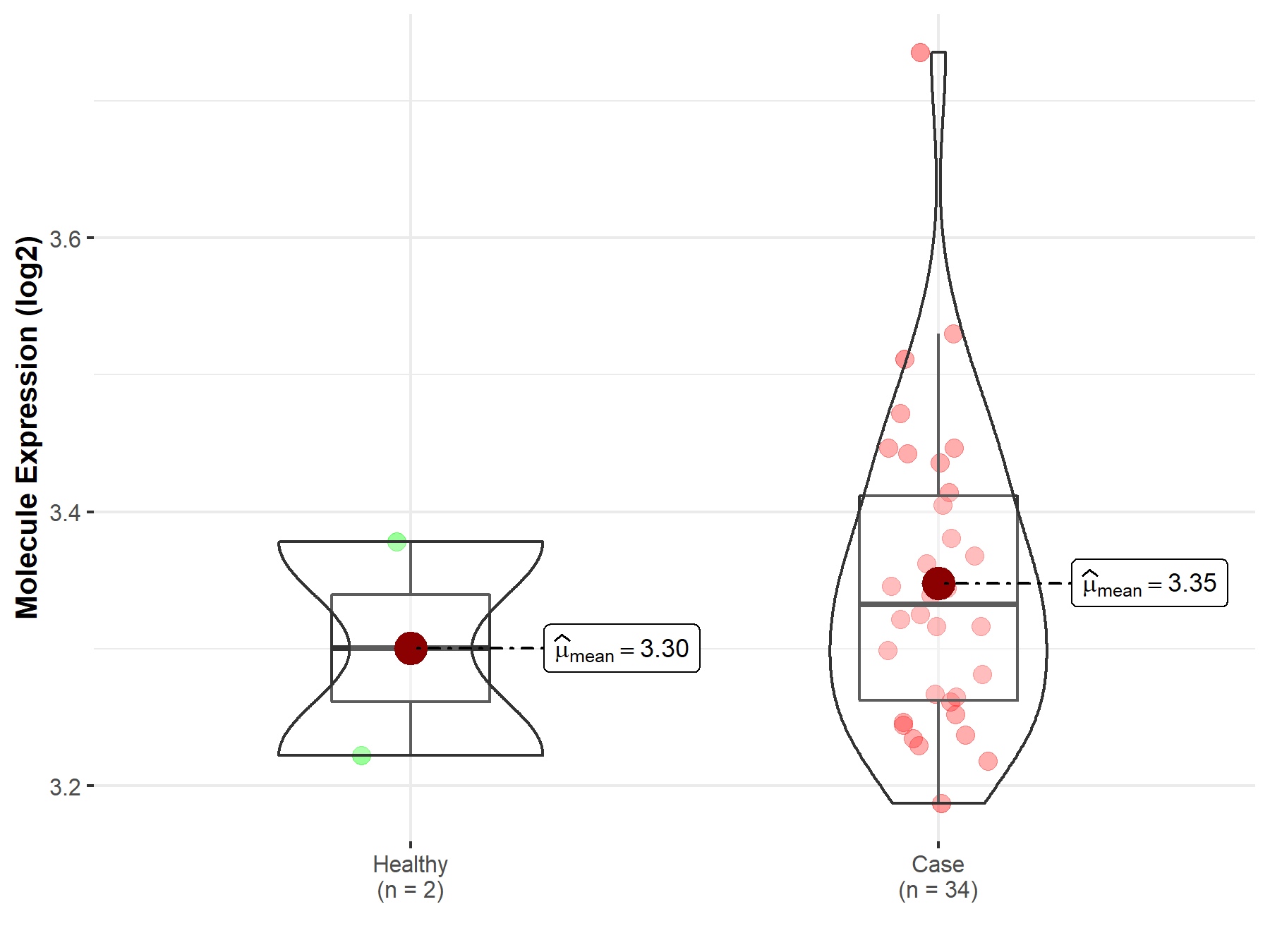
|
Click to View the Clearer Original Diagram |
| The Studied Tissue | White matter | |
| The Specified Disease | Glioma | |
| The Expression Level of Disease Section Compare with the Healthy Individual Tissue | p-value: 4.21E-03; Fold-change: -2.45E-01; Z-score: -1.55E+00 | |
|
Molecule expression in the diseased tissue of patients
Molecule expression in the normal tissue of healthy individuals
|
||
| Disease-specific Molecule Abundances |
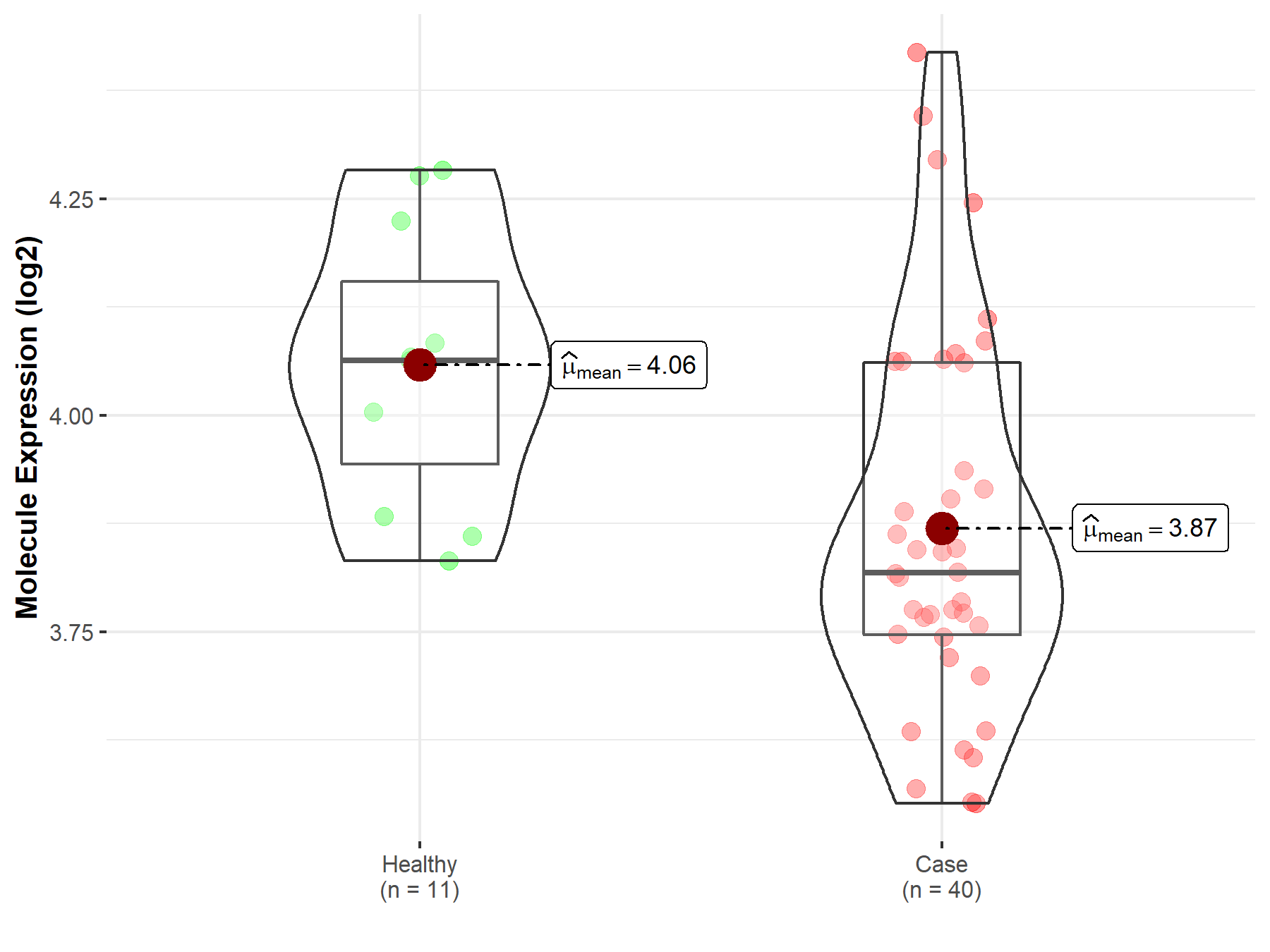
|
Click to View the Clearer Original Diagram |
| The Studied Tissue | Brainstem tissue | |
| The Specified Disease | Neuroectodermal tumor | |
| The Expression Level of Disease Section Compare with the Healthy Individual Tissue | p-value: 3.00E-04; Fold-change: -4.73E-01; Z-score: -1.75E+00 | |
|
Molecule expression in the diseased tissue of patients
Molecule expression in the normal tissue of healthy individuals
|
||
| Disease-specific Molecule Abundances |
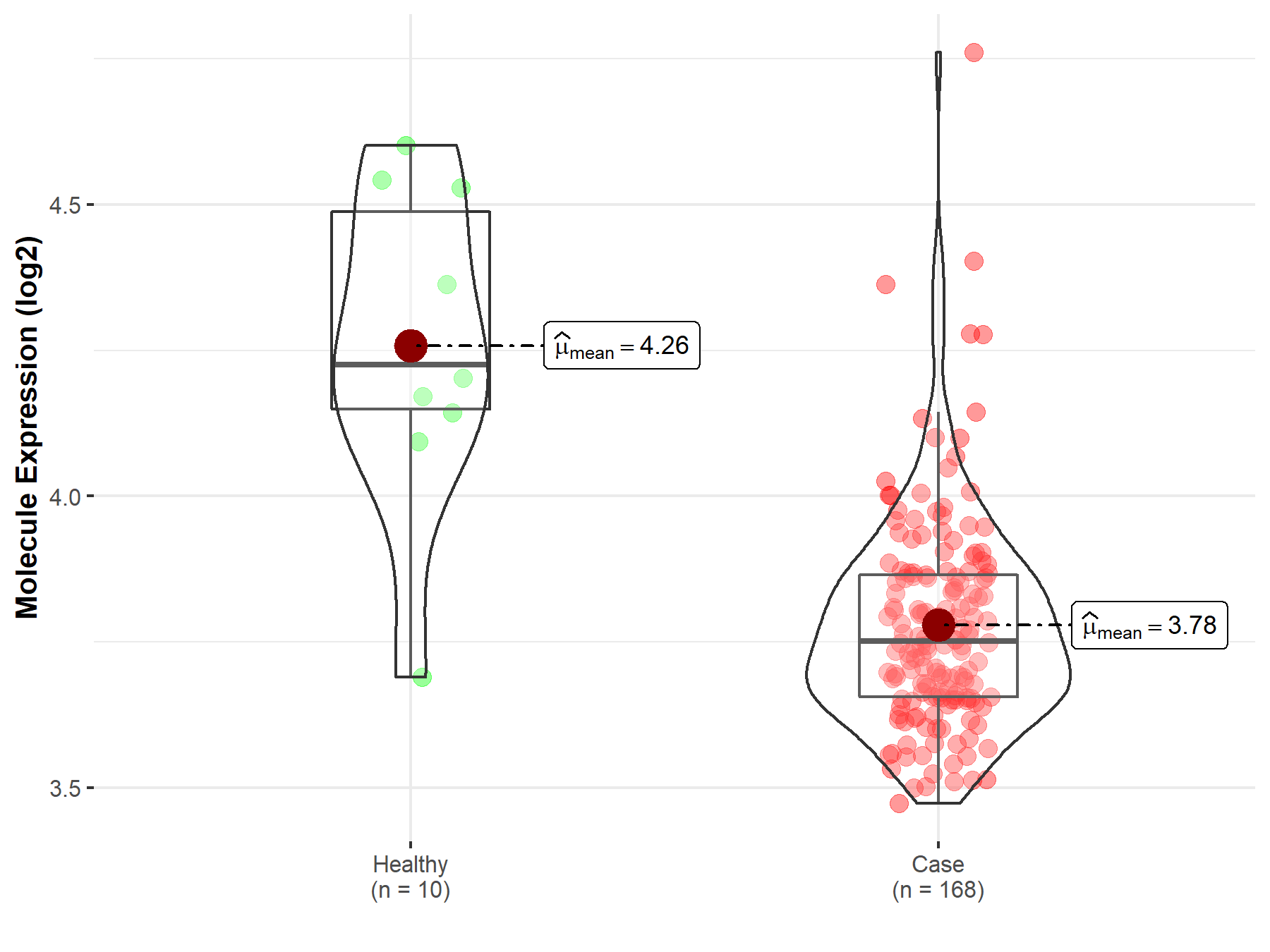
|
Click to View the Clearer Original Diagram |
| Differential expression of molecule in resistant diseases | ||
| The Studied Tissue | Colon | |
| The Specified Disease | Colon cancer | |
| The Expression Level of Disease Section Compare with the Healthy Individual Tissue | p-value: 3.76E-02; Fold-change: -4.54E-02; Z-score: -2.26E-01 | |
| The Expression Level of Disease Section Compare with the Adjacent Tissue | p-value: 8.29E-01; Fold-change: -2.71E-02; Z-score: -1.84E-01 | |
|
Molecule expression in the normal tissue adjacent to the diseased tissue of patients
Molecule expression in the diseased tissue of patients
Molecule expression in the normal tissue of healthy individuals
|
||
| Disease-specific Molecule Abundances |
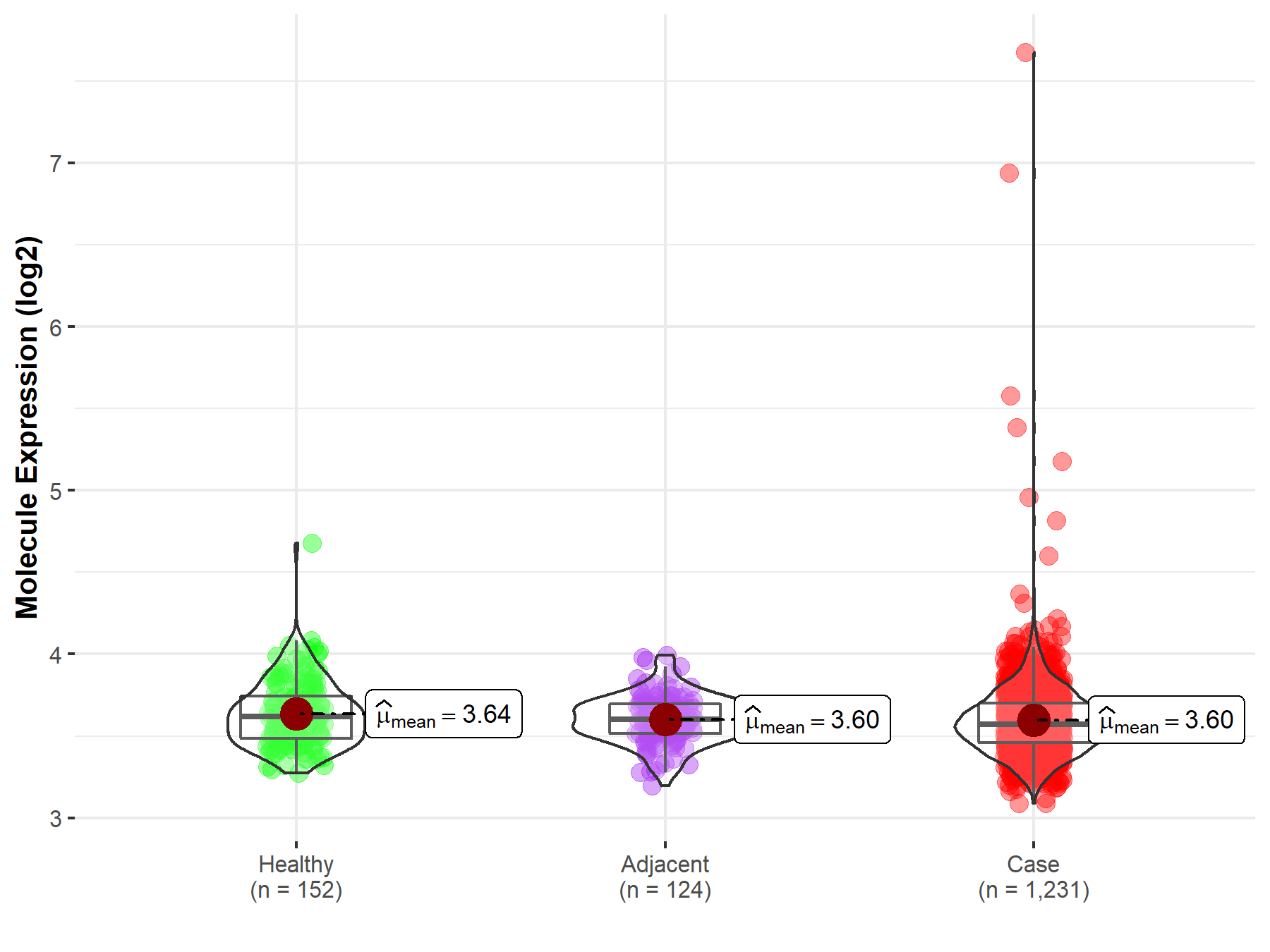
|
Click to View the Clearer Original Diagram |
| Differential expression of molecule in resistant diseases | ||
| The Studied Tissue | Liver | |
| The Specified Disease | Liver cancer | |
| The Expression Level of Disease Section Compare with the Healthy Individual Tissue | p-value: 7.11E-12; Fold-change: -1.08E+00; Z-score: -1.65E+00 | |
| The Expression Level of Disease Section Compare with the Adjacent Tissue | p-value: 1.20E-22; Fold-change: -5.67E-01; Z-score: -1.21E+00 | |
| The Expression Level of Disease Section Compare with the Other Disease Section | p-value: 4.82E-02; Fold-change: -1.40E+00; Z-score: -1.64E+00 | |
|
Molecule expression in the normal tissue adjacent to the diseased tissue of patients
Molecule expression in the diseased tissue of patients
Molecule expression in the normal tissue of healthy individuals
Molecule expression in tissue other than the diseased tissue of patients
|
||
| Disease-specific Molecule Abundances |
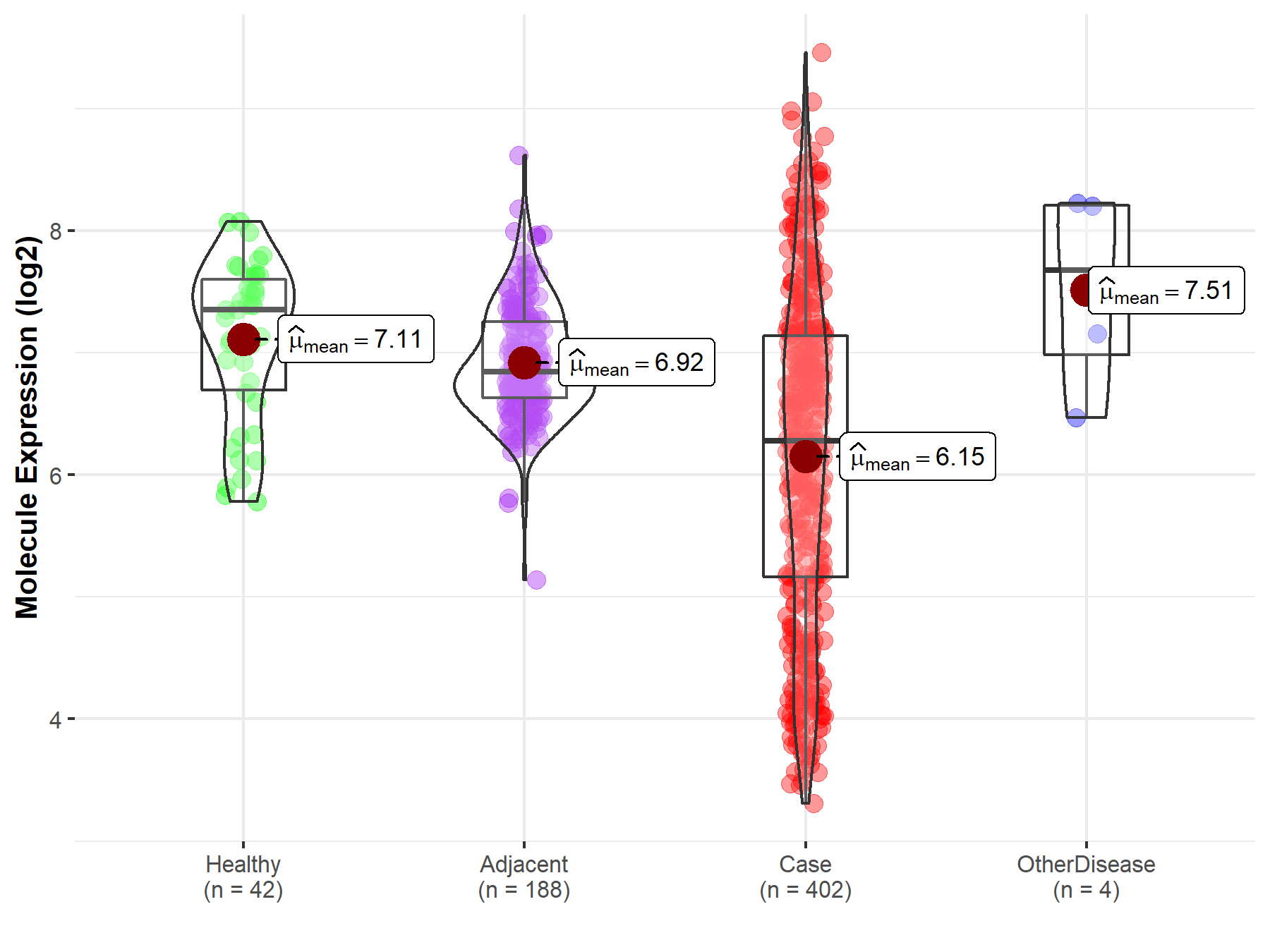
|
Click to View the Clearer Original Diagram |
Tissue-specific Molecule Abundances in Healthy Individuals


|
||
References
visits since 2022
If you find any error in data or bug in web service, please kindly report it to Dr. Sun and Dr. Zhang.
